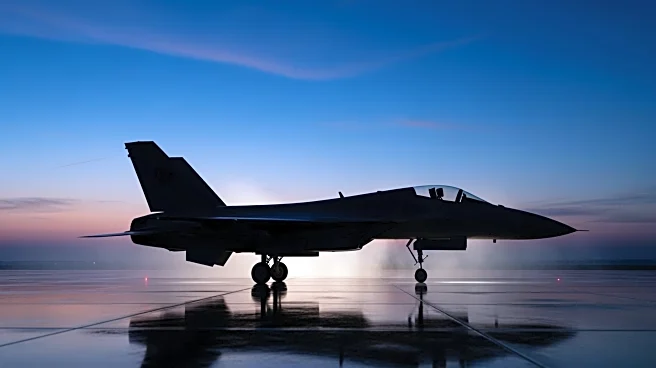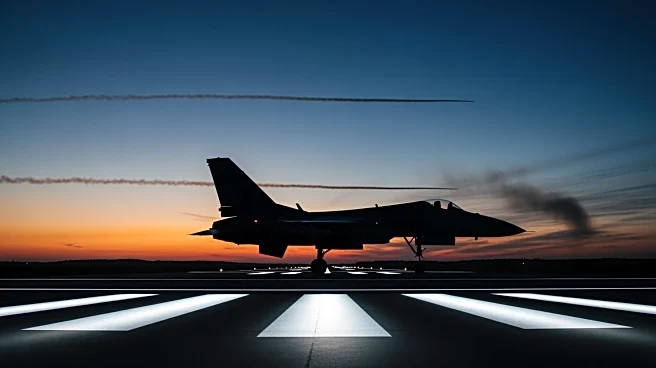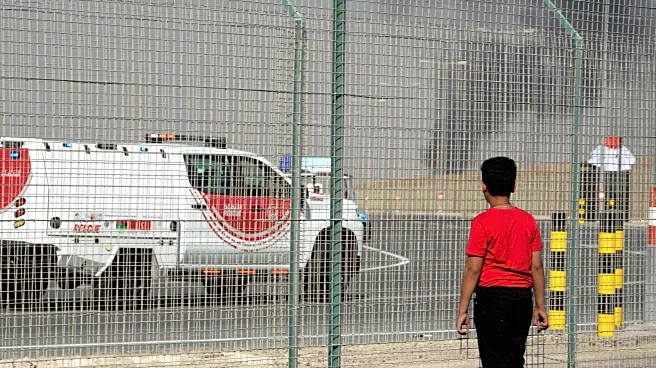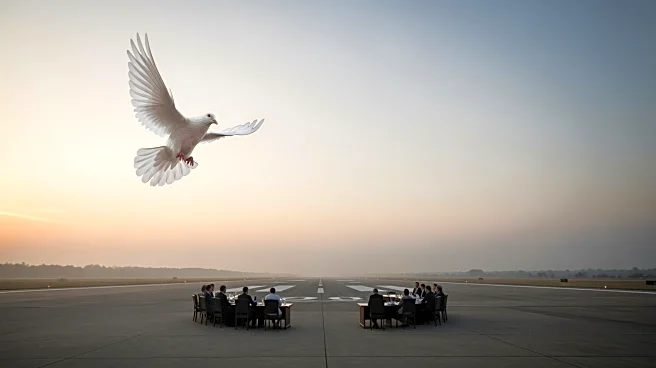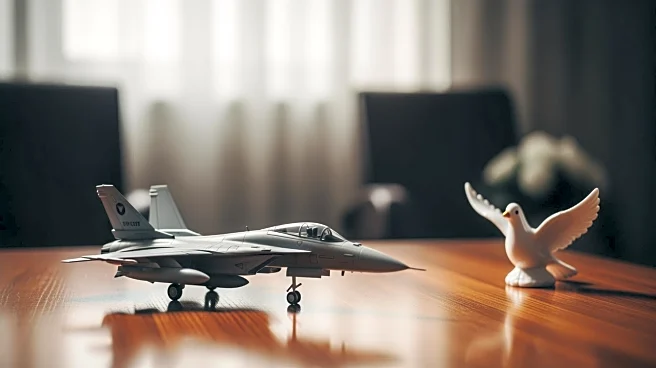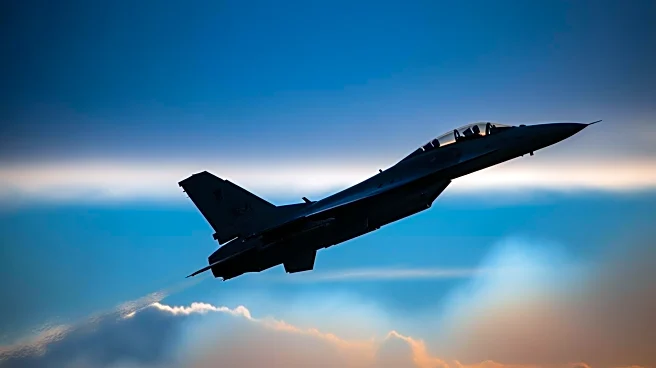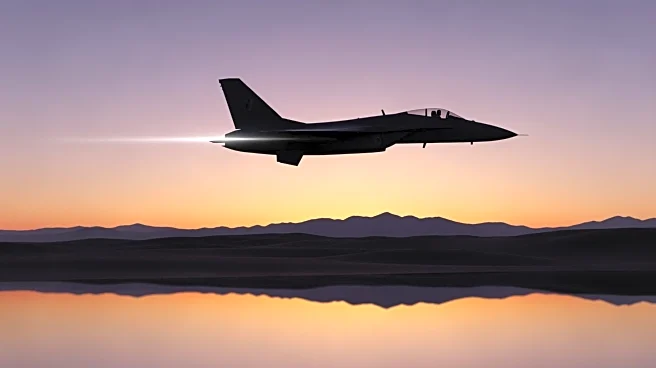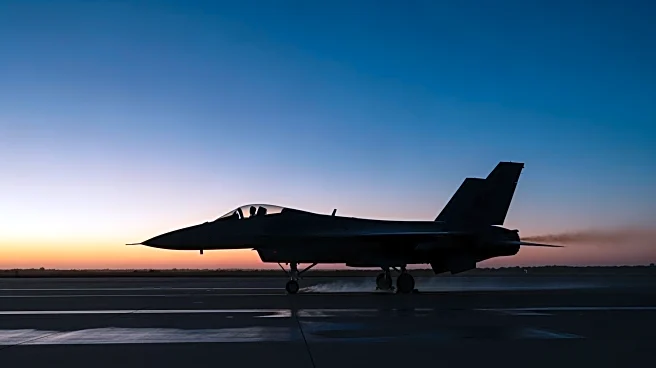What's Happening?
Wing Commander Namansh Syal of the Indian Air Force tragically lost his life in a crash involving the LCA Tejas fighter jet during an aerobatic demonstration at the Dubai Air Show. The incident occurred on November 21st, when the aircraft failed to recover
from a low-altitude negative G-turn, resulting in a crash and subsequent fire at Al Maktoum International Airport. The pilot was unable to eject in time, leading to fatal injuries. The Tejas Mark-1 jet was performing an eight-minute aerobatic display when the mishap took place. This marks the second crash of the Tejas since its induction into the Indian Air Force, with the first occurring near Jaisalmer last year, where the pilot safely ejected. The Indian Air Force has initiated a court of inquiry to determine the cause of the crash, working in coordination with Dubai aviation authorities to recover the aircraft's black box.
Why It's Important?
The crash of the Tejas jet at an international air show raises concerns about the safety and reliability of the aircraft, which is a key component of India's indigenous defense capabilities. The incident could impact India's defense export ambitions, as the Tejas is showcased as a symbol of India's growing aerospace industry. The loss of Wing Commander Syal is a significant blow to the Indian Air Force, highlighting the risks faced by military personnel during high-stakes demonstrations. The inquiry into the crash will be crucial in addressing any technical or operational issues with the Tejas, which could affect future deployments and international sales. The event also underscores the importance of safety protocols and emergency response measures during air shows, which attract large audiences and involve complex aerial maneuvers.
What's Next?
The Indian Air Force's court of inquiry will focus on identifying the technical or human factors that led to the crash. This investigation will involve analyzing the recovered black box data and coordinating with Dubai aviation authorities. The findings could lead to modifications in the Tejas aircraft or changes in operational procedures to prevent future incidents. Additionally, the crash may prompt a review of safety measures at international air shows, potentially influencing regulations and standards for aerobatic displays. The outcome of the inquiry will be closely watched by defense stakeholders and could impact India's defense export strategy, particularly in markets interested in the Tejas fighter jet.
Beyond the Headlines
The tragic loss of Wing Commander Syal highlights the personal sacrifices made by military personnel in the line of duty. His death has deeply affected his native village in Himachal Pradesh, where he was regarded as a local hero and a source of pride. The incident also brings attention to the emotional toll on families of service members who face the dangers of military aviation. As India continues to develop its indigenous defense capabilities, the crash serves as a reminder of the challenges and risks involved in advancing aerospace technology. The event may also influence public perception of the Tejas program and India's defense industry, potentially affecting support for future investments in military aviation.
